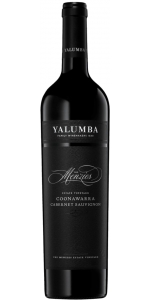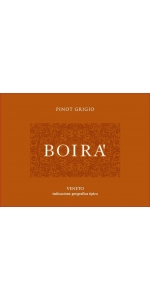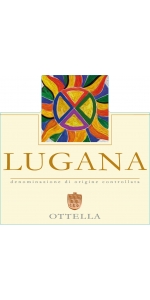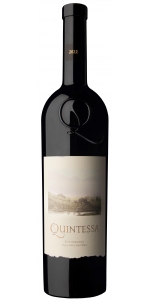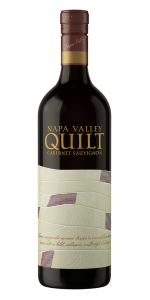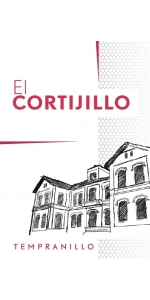New Products
In 1992 the Hill-Smith family counted themselves amongst those fortunate enough to own a vineyard upon the famous Coonawarra terra rossa soil over limestone. Experimentation, innovation, minimalist intervention and small batch winemaking has resulted in The Menzies’ reputation as a wine of longevity, elegance and structure.
Situated in the heart of Coonawarra’s terra rossa strip, The Menzies Estate vineyard lies on a flat plain, approximately 70km from the coast. Given the terrain and influence of the cooling Bonney upwelling, Coonawarra is an ideal location to grow premium Cabernet Sauvignon. Our soil is red sandy loam over limestone, which is classic Cabernet Sauvignon country. The grapes for The Menzies 2017 are from vines planted in 1994 and 1996. Bunches are usually small with small berries, giving concentration via an ideal skin to juice ratio favouring the making of fullbodied reds.
Experimentation, innovation, minimalist intervention, and small batch winemaking has resulted in The Menzies' reputation as a wine of longevity, elegance, and structure.
Aromas of fresh rosemary, mulberry, violets and exotic spices. Take a sip and you will feel the poise and tension for which great Cabernet is renowned. A wine of great complexity with flavors of blackcurrant, bitter chocolate, and mulberries, wrapped in divine tannins and a lovely sweet, dark fruit finish. With decanting in its youth, it is enjoyable as an elegant full-bodied red wine.
Review:
The 2018 The Menzies Cabernet Sauvignon is luscious and velvety in the mouth, with a lustrous core of shimmering purple Cabernet fruit. The tannins are typical of Coonawarra in that they are firm, yet they are seamlessly inlaid into the fruit, which feels as if it spills over the edge of the glass. Seductive but rigid, it will have a long life in front of it, make no mistake. You get cassis, resin, licorice, raspberry, gravel/iodine, bay leaf, dark chocolate, after dinner mints (the only brand to be had is the After Eight mints, of course), and notions of cedar spice. Brilliant. 14% alcohol, sealed under cork.
-Wine Spectator 95 Points
Boira' Pinot Grigio is made from certified organically farmed vineyards surrounding the city of Verona.
The wine shows a brilliant straw color with golden reflections. Fresh and floral bouquet with a hint of pears, apricots and bananas blended with intense aromas of acacia flowers. Fresh and inviting on the palate with bright fruit and an easy drinking style with a pleasing hint of almonds in the aftertaste.
The average age of the vines is 25 years old. The vineyards' soils are made of stoney calcareous, rich in minerals and fossils that gives this wine bright aromatics and a refreshing lift on the palate. After a 12-hour skin maceration to obtain enhanced aromas, the wine is fermented in stainless steel. The finished wine is placed in stainless steel holding tanks until bottled. Aged 3-4 months in stainless steel.
Pairs well with seafood dishes.
Ottella Lugana Bianco is produced in South Benedetto di Lugana. 100% Turbiano (clonal type of Trebbiano di Lugana)
The grapes are harvested exclusively from our own vineyards; harvesting is strictly manual in small 17kg-crates. Guyot, double arc training method.
A brief contact on the skin, stainless steel-controlled fermenting.
Intense straw yellow color with green tinges. Exotic notes, candied fruit and citrus, warm and very deep on the nose. Widespread expressive finesse; to the palate the texture is rich and persistant.
Pairs best with fish-based plates, soup, pasta or rice, white meat.
Quintessa Red 2022 is made from 93% Cabernet Sauvignon, 4% Cabernet Franc, 1% Carménère, 1% Merlot, 1% Petit Verdot.
The 2022 Quintessa is a charming wine, opening with intense aromas of black cherry and cassis that are complemented by notes of tobacco, bay laurel, cedar, and dark chocolate. Plush and inviting on entry, this wine’s flavors align with its aromas. The palate reveals dark fruits and an undertone of crushed rocks, tar, and graphite. On the finish, this vintage displays the signature fine-grained tannin of their Quintessa terroir, backed by voluminous texture and fruit.
Review:
So sweet and purely fruity on the nose, then layered, sophisticated, detailed and complex on the palate. Full-bodied and fully tannic, yet the fine-sand tannins are beautifully integrated, with ripe red and black cherries, raspberries, blueberries and cocoa. Elegant, intricate, charming and quite fresh. Made from 93% cabernet sauvignon, 4% cabernet franc and 1% each of carmenere, petit verdot and merlot. Drinkable now, but best from 2030.
-James Sucking 97 Points
WINERY SALE!
COLOR Deep, dark brick red to blood plum
AROMAS A seamless blend of crème de cassis, hazelnut, cocoa, blackberry preserves, a charry meat toastiness, dark fruits and blackberry pie along with suggestions of dark licorice, stewed rhubarb, strawberry, spice and vanillin.
PALATE Rich and satisfying with chocolate brownie, yogurt, molasses, brown sugar and rhubarb notes presented in perfect balance with higher-toned fruit emphasis.
STRUCTURE The wine’s weight is first felt on the front of the palate but then coats the entire mouth with placating tannin and a light, pleasing grittiness. This weight, ideally counterpoised alongside the acid, leaves the mouth watering. Great persistence on the finish.
Dark ruby red in the glass, with rich notes of chocolate, black currant, ripe blackberry, and marionberry with hints of toasted oak and dark cherry on the nose. The palate is rich and complex with flavors of ripe dark fruits, chocolate cherry, plum, toffee, and blackberry pie. This wine has a lingering fruit-forward finish with firm acidity and smooth velvety tannins. A classic yet complex Napa Valley Cabernet Sauvignon.
El Cortijillo Tempranillo La Mancha is made from 100% Tempranillo
Up front aromas of raspberry and cherry fruit, medium to light weight, Rhône wine in character, cherry fruit flavors, followed by bright acidity. Reminds of a mythical cross between a Pinot Noir and a Côtes-du-Rhône. Pleasant and fun, bistro red.
Made from 30 year old vine.
Delicious with Paella, hamburger or pasta. But also great with grilled vegetables. (bell pepper, eggplant, etc)
- back
Renato Ratti Rocche dell'Annunziata Barolo is made from 100 percent Nebbiolo. Grapes handpicked in the month of October, de-stemmed and pressed. The alcoholic fermentation takes place in temperature-controlled stainless steel containers. Contact with the skins lasts approximately three to four weeks and includes fermentation and subsequent post-fermentation maceration with the traditional submerged cap system. The malolactic fermentation takes place in steel containers.
The Rocche dell'Annunziata vineyard is historically known as one of the most important in the Barolo zone. In his Barolo Chart, Renato Ratti had already underscored this by entering it in the 1st Category class. Situated at about 300 meters above sea level and with a south-east exposure, it extends over approximately 1 hectare. Rich with typical blue marl interspersed between veins of sand, the earth confers an extraordinary elegance and depth, combined with fine and persistent scents of roses and licorice. A prestigious subzone engenders a Barolo that holds within it suggestions of a radiant future. Warm, persistent, rich: in a word, sumptuous.
The label bears the coat of arms of the local noble family, with a black hawk against a gilt backdrop. The Latin inscription “Probasti me et cogniusti me” means “You tried me, you knew me.”
The Bottle: The Albeisa – named after the city of Alba – is the iconic bottle created by Renato Ratti in 1973, desired as a way of identifying the uniqueness of a territory and its wines.
A garnet red. Delicate and persistent fragrance with trace scents of licorice, rose and violet. Full-flavored, warm, with extremely elegant tannins offering long persistence. A great wine for important dishes, red meats roasted on a spit or grilled, game, dishes of gourmet white and red meats and ripe cheeses.
Review:
Lots of dried flowers here give a perfumed nature to it with berries and citrus. Hibiscus water, too. Full-bodied and chewy with lots of tannins and vivid acidity. Subtle plum and strawberry character. Muscular and formed..
-James Suckling 97 Points
Burgo Viejo Rioja Tinto is made from 85% Tempranillo, 10% Garnacha & 5% Mazuelo
Burgo Viejo Tinto comes from a careful selection of the grapes during the harvest followed by meticulous vinification to extract the highest potential of the grapes in an effort to achieve a fresh, powerful, fruit-driven young wine that will satisfy a wide range of palates.
The wine shows fresh aromas of red fruit –strawberry candy- on a very subtle background of sweet vanilla and cocoa. In mouth it is also fresh with balanced acidity, good length and absolutely velvety tannins.
Alcoholic fermentation in stainless steel vats at controlled temperature and malolactic fermentation in concrete vats.
Enjoy it with pasta dishes, cheese and red meat.

